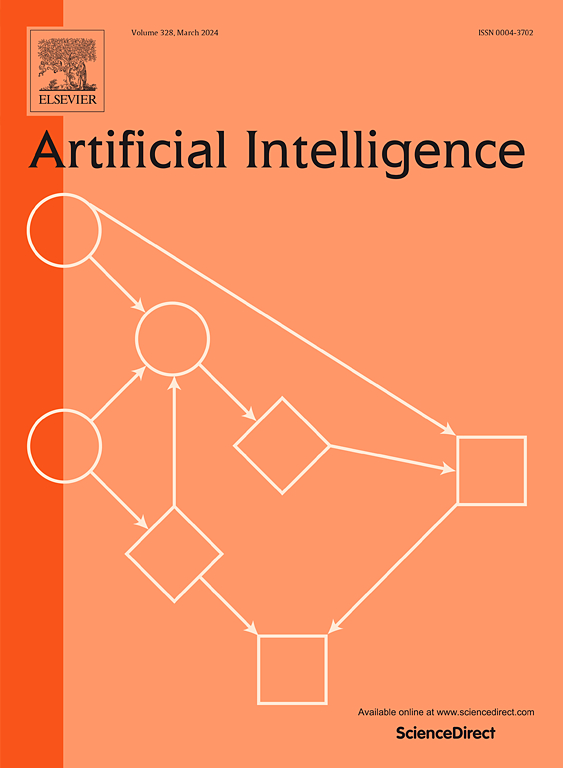在纯过去线性时间逻辑中规划时间扩展目标
IF 4.6
2区 计算机科学
Q1 COMPUTER SCIENCE, ARTIFICIAL INTELLIGENCE
引用次数: 0
摘要
我们研究了在确定性(即经典)和完全可观察的非确定性(FOND)域的背景下,纯过去线性时间逻辑(ppltl)中表达的时间扩展目标的规划。ppltl是有限轨迹上的线性时间时间逻辑(ltlf)的变体,它指的是过去而不是未来。尽管ppltl与ltf一样具有表现力,但我们证明了它在规划方面的计算效率要高得多。特别地,我们证明了检验ppltl公式的计划有效性是马尔可夫的。这是通过引入线性数量的附加命题变量来实现的,这些变量以模块化的方式捕获整个公式的有效性。解决方案编码只引入与ppltl目标大小成比例的线性数量的新流,并且不需要任何额外的伪操作。我们在一个名为Plan4Past的系统中实现了我们的解决方案技术,该系统可以与最先进的经典规划和FOND规划一起使用。我们的实证分析证明了Plan4Past在经典问题和FOND问题中的实际有效性,表明所得到的规划器在实现终身目标方面的总体表现优于其他规划方法。本文章由计算机程序翻译,如有差异,请以英文原文为准。
Planning for temporally extended goals in pure-past linear temporal logic
We study planning for temporally extended goals expressed in Pure-Past Linear Temporal Logic (ppltl) in the context of deterministic (i.e., classical) and fully observable nondeterministic (FOND) domains. ppltl is the variant of Linear-time Temporal Logic on finite traces (ltlf) that refers to the past rather than the future. Although ppltl is as expressive as ltlf, we show that it is computationally much more effective for planning. In particular, we show that checking the validity of a plan for a ppltl formula is Markovian. This is achieved by introducing a linear number of additional propositional variables that capture the validity of the entire formula in a modular fashion. The solution encoding introduces only a linear number of new fluents proportional to the size of the ppltl goal and does not require any additional spurious action. We implement our solution technique in a system called , which can be used alongside state-of-the-art classical and FOND planners. Our empirical analysis demonstrates the practical effectiveness of in both classical and FOND problems, showing that the resulting planner performs overall better than other planning approaches for ltlf goals.
求助全文
通过发布文献求助,成功后即可免费获取论文全文。
去求助
来源期刊

Artificial Intelligence
工程技术-计算机:人工智能
CiteScore
11.20
自引率
1.40%
发文量
118
审稿时长
8 months
期刊介绍:
The Journal of Artificial Intelligence (AIJ) welcomes papers covering a broad spectrum of AI topics, including cognition, automated reasoning, computer vision, machine learning, and more. Papers should demonstrate advancements in AI and propose innovative approaches to AI problems. Additionally, the journal accepts papers describing AI applications, focusing on how new methods enhance performance rather than reiterating conventional approaches. In addition to regular papers, AIJ also accepts Research Notes, Research Field Reviews, Position Papers, Book Reviews, and summary papers on AI challenges and competitions.
 求助内容:
求助内容: 应助结果提醒方式:
应助结果提醒方式:


